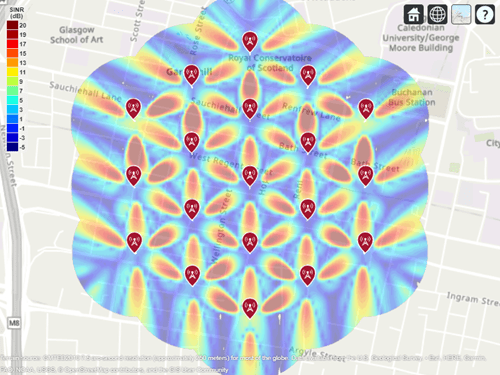Waveform Design and Signal Synthesis
Phased Array System Toolbox™ lets you create narrowband signal waveforms that are radiated by antennas, microphones, sonar transducers, and arrays. Narrowband signals fall into pulsed and continuous types. Waveform types include rectangular, frequency-modulated continuous, phase-coded, and stepped-frequency signals. In addition, matched filter algorithms are provided to perform coherent processing. The toolbox lets you create and plot ambiguity functions.
The toolbox also lets you model free-space signal propagation in monostatic or bistatic scenarios with targets and arrays in motion. Alternatively, you model atmospheric attenuation using line-of-sight (LOS) propagation models. These models calculate signal propagation through atmospheric gases, rain, and fog and clouds. All models include range-dependent time delay, phase shift, Doppler shift, and free-space loss. You can specify scattering radar cross sections (RCS) for nonpolarized radiation or scattering matrices for polarized radiation. The toolbox implements the four standard Swerling target radar cross-section models.
Categories
- Pulsed Waveforms
Amplitude, phase, and frequency-modulated pulse waveforms
- Continuous Waveforms
Amplitude, phase, and frequency-modulated continuous waveforms
- Matched Filter and Ambiguity Function
Matched filtering, ambiguity function, spectrogram, range transforms
- Signal Propagation and Targets
Narrowband and wideband free-space propagation, multipath underwater sound propagation, atmospheric losses, spatial MIMO channels, radar cross section, sonar target strength, Swerling targets
- Motion Modeling and Coordinate Systems
Perform array and target trajectory modeling, coordinate transformations, and compute Doppler shift








